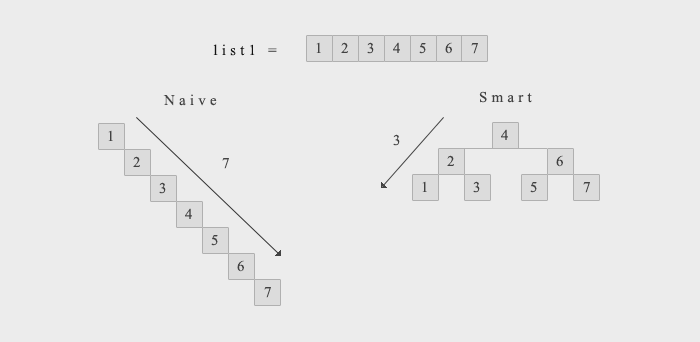A couple of weeks ago, at the beginning of one of the courses at the University of Toronto, I wrote about why geeks should write. Today, I am revisiting this topic by going through some of my favorite blogs from my classmates, and how each one helped me either understand course content better, or be inspired to build something amazing. In a sense, I am demonstrating why geeks should write by being a geek who reads, thus giving value to those who took the time to write in the first place. From shared frustrations and code debugging to inspiring and intriguing posts, here are my picks of 2015’s CSC148:
Sooham Rafiz’s post on Assignment 3:
(View this post). My fellow classmate and friend Sooham takes a critical approach to Assignment 3, and, in particular, the suggested algorithm implementation given to us by the faculty. Since I was his teammate for this assignment, we shared the pain and struggle of implementing the (almost) correct pruning optimizations for minimax, and specially had a lot of trouble trying to understand intuitively what the algorithms was doing, since it was so different from common implementations of minimax (including MIT’s one). I strongly support his views on the topic, and encourage the faculty to consider changing the algorithm for future iterations of the course.
Being able to read about other people’s frustrations and struggles is great. No, not in a sadistic way. It’s just good to see that you are not the only one having trouble accomplishing something. Some things aren’t as easy as they seem, and maybe reading about somebody’s approach to a challenge will help you approach a similar one. Knowledge acquired by solving issues is extremely valuable, and being able to grow from obstacles, even if they aren’t your own, is great! I said it once and I’ll say it again: the first reason why geeks should write is that other geeks are very likely to benefit from your geeky endeavours.
Chris Lessard’s post on efficient Binary Search Trees:
(View this post). Chris explores more efficient ways to insert a list of 5000 integers into a binary search tree than were ever mentioned in the course, including red-black search trees that could potentially be used to implement a self-balancing search tree (which is great!). I really enjoyed reading about someone else that thought of extending the basic requirements of the course, trying something different. I posted about my own solution to this problem, which turned out to be quite similar to one of the discussed ones on this post.
It is great to be able to read about different approaches that each person has towards the same problem. If I had not read this post, I wouldn’t have learned about read-black binary trees, and thus my learning would be just that one bit less exciting. I encourage you, the reader, to write about your geeky (or not so geeky) approaches to obstacles that you face in your field, and I’m confident that somebody will benefit from your posts!
Sophie Wong’s take on Why Geeks should Write:
(View this post). I decided to add this article as some sort of meta inception of my own post. I am reviewing a post about why geeks should write on a post that revisits this topic, which is pretty cool. In any case, Sophie mentions a reason why geeks should write that had completely escaped me: we might actually forget how to use normal languages if we don’t practice them. Of course, Sophie (and geeks in general) aren’t worried about not being able to communicate normally. It is more about how a lack of practice in oral and written communication (or anything for that matter) can lead to some deterioration of skills. I found her article both funny and thought provoking. Overall, a great read!
So, if the previous reasons that I have given as to why geeks should write, such as having other geeks benefit from whatever you are writing about, and being able to share your experiences with like-minded people, haven’t convinced you, the last reason why you should begin writing your own blog is that geeks must practice their “soft” skills (such as written communication) as much as they practice their programming/technical skills! The last thing you want is for your rusty writing skills to prevent you from getting that dream job of yours, so get on writing today!
I admit that this post is basically a long persuasive article on why you should start writing your own blog, but I think is worth it, especially since I will potentially end up reading whatever you write when I get stuck on a similar obstacle you have overcome or just reading something inspiring you have done. It is all for my own benefit.
In all seriousness though, I hope that you enjoyed reading about some of the blog posts from students at the University of Toronto, and that you have appreciated (just a little) the wonders of blogging. Whether or not you join this pursue is up to you (or maybe you already did?).
Keep giving me more reasons to think geeks should indeed keep being awesome,
Juan Camilo Osorio

